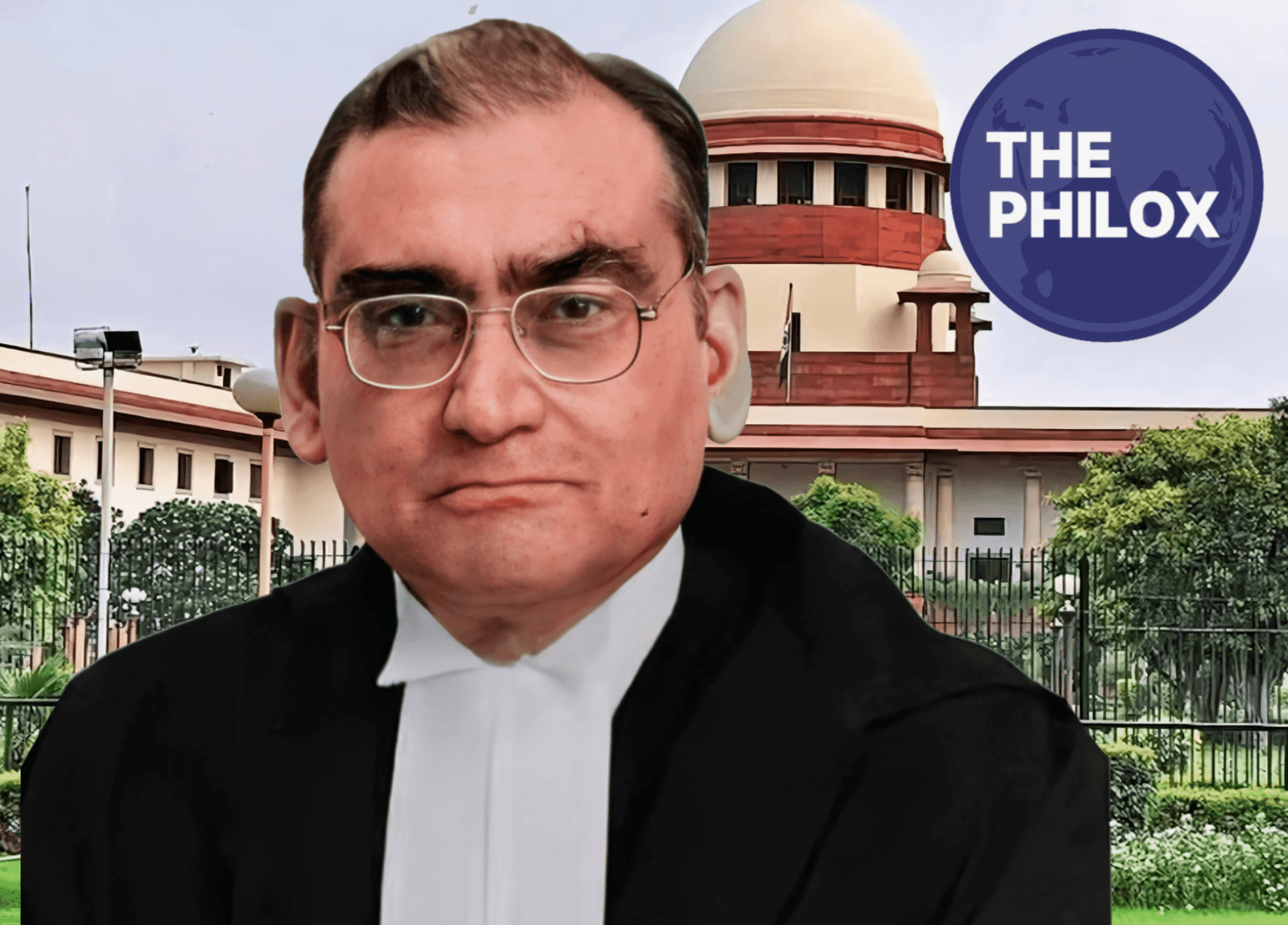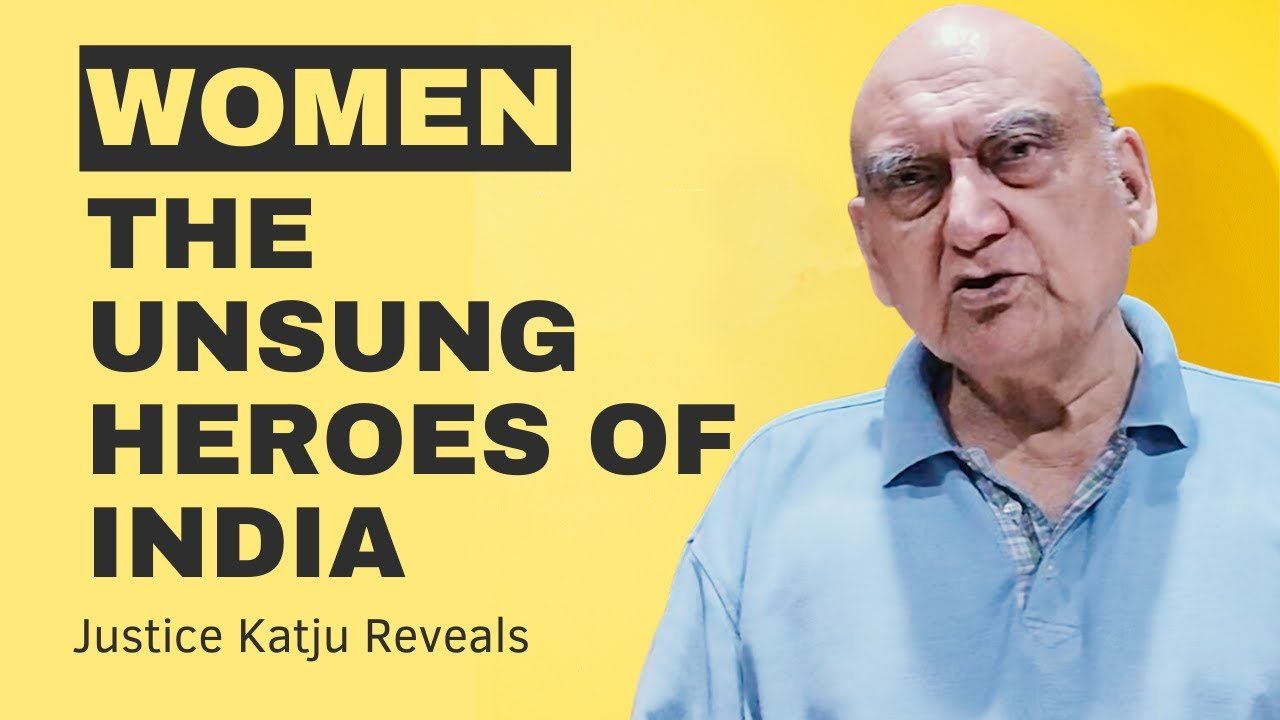The Mimansa principles of Interpretation
By Justice Katju
When the British came to India they propagated the notion that Indians were only a race of fools and savages, and whatever knowledge existed in the world came from the West. Apart from other things they introduced in India was a system of interpreting legal texts based on a book called ‘Interpretation of statutes’ written by the Bitish jurist Maxwell, and this has been used in our law courts even upto today.
However, in India our ancestors had developed a highly rational system of interpretation called the Mimansa Principles since ancient times, but these were totally suppressed by the Britishers, and never used in our law courts. It has been my effort to revive them ( through my judgments, articles etc which can be seen online ), and it is about these that that I am writing this article.
http://justicekatju.blogspot.com/2014/07/mimansa-rules-of-interpretation-this-is.html
But before discussing them it is necessary to delve into the background, to explain how the Mimansa Principles came into existence.
Today, the Hindu religions consists of going to temples of Ram, Krishna, Hanuman, Shiva, etc and praying there. But ancient Indian Hinduism was very different. In ancient India there were no temples, no idols, no Ram, Krishna, Hanuman, etc ( there is no mention of these gods in the Rigved ). Ancient Indian Hinduism was based on performing the yagyas or rituals before the sacrificial fire. There were various yagyas for various purposes e.g. agnihotra, darshapaurnamas, etc, and the method of performing them was given in detail in books called the Brahmanas e.g. Aitareya Brahman, Taitareya Brahman, Shatapath Brahman, etc
The Brahmanas are part of the Vedas.
So I may now explain the meaning of the word ‘Veda’.
The word Veda (also called `Shruti’) consists of four parts :-
I. Samhita or Mantra, which consists of the four books Rigveda, Yajurveda, Samveda and Atharvaveda. The word ‘Samhita’ means a collection, and Rigveda is a collection of hymns to various gods e.g. Indra, Agni, Surya, etc. The principal Veda is the Rigveda, and it is written in poetic verses called ‘richas’. The Samveda is really Rigveda set to music, while about 2/3rd of the Richas (poems) of Yajurveda are taken from the Rigveda. Some people regard the Atharvaveda as a later addition to the Samhitas, which were earlier known as ‘trayi vidya’ consisting of the Rigveda, Yajurveda and Samveda.
II. The Brahmanas, which are books written in prose in which the method of performing the various yagyas is given. Each Brahmana is attached to some Samhita. Thus attached to the Rigveda is the Aitareya Brahmana and the Kaushiteki Brahmana, attached to the Samveda is the Tandya Brahmana and some other Brahmanas, attached to the white (shukla) Yajurveda is the Shatapatha Brahmana and some other Brahmanas, attached to the black (Krishna) Yajurveda is the Taitareya Brahmana and some other Brahmana, attached to the Atharvaveda is the Gopath Brahmana. As stated above, these Brahmana are written in prose, unlike the Samhitas which are mainly in poetry, and they prescribe the rules for performing the various yagyas.
III. The Aranyaks, which are forest books. These contain the germs of philosophical thought, though in undeveloped form.
IV. The Upanishads which incorporated developed philosophical ideas.
The above four, namely, the Samhitas, the Brahmanas, the Aranyaks, and the Upanishads are collectively known as Veda or Shruti.
Now it is necessary to make another digression.
The generally accepted view is that there are six systems of classical (orthodox) Indian philosophy (Shat Dharshana) and three non classical (unorthodox) systems. The six classical (orthodox) systems are Nyaya, Vaisheshik, Sankya, Yoga, Purva Mimansa ( briefly called Mimansa ) and Uttar Mimansa (also known as Vedanta). The non classical (unorthodox) systems are Buddhism, Jainism and Charvak.
The Shatdarshanas are given below, with a brief mention of their viewpoints.
Shatdarshana or six classical (orthodox) schools of Indian philosophy
- Nyaya – presents the scientific outlook . It insists that nothing is acceptable unless it is in accordance with reason and experience. It was subsequently distorted by the later Nyayiks.
- Vaisheshik – presents the atomic theory, the physics of ancient times
- Sankhya – Probably presents the materialist ontology of the Nyaya Vaisheshik system. However, very little of the original literature on Sankhya has survived, and there is some controversy about its basic principles, some saying that it is dualistic and not monistic because it has two entities, purush and prakriti, in it.
- Yoga – presents a method of physical and mental discipline
- Purva mimansa (or briefly mimansa) – lays emphasis on the performance of the yagya for attaining various spiritual and worldly benefits. Hence it relies on the Brahmana part of the Vedas.
- Uttar Mimansa (or Vedanta) – lays emphasis on brahmagyan, hence it relies on the Upanishad part of the Vedas.
It is said that the classical and non-classical system of philosophy differ in that the former accept the authority of the Vedas while the latter do not. However this does not seem to be correct as a close examination shows that the first 4 classical systems do not really accept the authority of the Vedas (though some of them pay lip service to it). It is the last two, the Purva Mimansa and the Uttar Mimansa, which certainly rely on the Veda ( when we use the term Mimansa we mean Purva Mimansa ).
While Uttar Mimansa ( which is also called Vedant ) is philosophical, Purva Mimansa ( also called in brief Mimansa ) is ritualistic. The latter lays emphasis on performing the yagyas, and since the method of performing them is given in the Brahmana books, it regards the Brahmanas as the most important part of the Vedas ( whereas the former regard the Upanishads the most important part ).
Now it was a cardinal principle in performing the yagya that it must be performed exactly as prescribed in the Brahmanas. The problem, however, was that the language used in the Brahmanas was often not clear, with ambiguities, conflicting texts, ellipses, etc. Hence to interpret them, rules of interpretation had to be created, and these were the Mimansa Principles of Interpretation. These rules were initially for religious purpose ( to ensure that the yagya was properly performed ), but because they were so rational and logical they began to be used in other fields too ( including law ), that is, they became of universal application.
Jaimini’s sutras is the first treatise on the Mimansa Rules of Interpretation, followed by commentaries of Shabar, Kumarila Bhatta, Prabhakar, and others. Our great jurists, such as Vijnaneshwara (author of Mitakshara), Jimutvahana (author of Dayabhaga), Nanda Pandit, and others, would frequently refer to these Mimansa Principles whenever they discovered a contradiction between the numerous Smritis or any ambiguity, incongruity, or casus omissus within
I may give just one example of their application to resolve a legal difficulty.
The son of a man from his legally wedded wife is called an ‘aurasa putra’. On the other hand, an adopted son is called a dattak putra. As regards the right of an auras putra, they are mentioned in various legal texts (the Smritis and the commentaries). On the other hand, there is no mention anywhere what would be the rights and duties of a dattak putra.
This legal vacuum was overcome by our ancient jurists by using one of the Mimansa principles of interpretation. It may be mentioned herein that the Mimansa principles of interpretation were the principles regularly used by our great jurists whenever they faced any difficulty in interpreting a legal text (because of ambiguity, conflict etc. therein). The books on Mimansa are all in Sanskrit, but there is a good book in English called ‘Mimansa Rules of Interpretation’ by Prof Kishori Lal Sarkar published in 1909, which I have edited to make it uptodate, may be seen if one wishes to go deeper into the subject.
One of the Mimansa principles is called the atidesh principle, and this was used by our ancient jurists to solve the problem of the rights and duties of a dattak putra. What is this atidesh principle? To explain this it may be mentioned that the rules for performing certain yagyas are given in religious books called the Brahmanas, e.g. Shatapath Brahmana, Aitareya Brahmana, etc. The yagyas whose rules of performance are expressly given in the Brahmanas are known as Prakriti yagyas. Thus, the Darshapaurnamas is a prakriti yagya, because the rules for its performance are given in the first chapter of the Shatapath Brahman. Similarly, the agnihotra is also a prakriti yagya, because its rules of performance are given in the second chapter of the Shatapath Brahman.
However, there were certain other yagyas whose rules of performance are not given anywhere e.g. the Saurya Yagya. Such yagyas are called Vikrit yagyas. How was a vikrit yagya to be performed ? For resolving this difficulty (in fact all the Mimansa principles were created for resolving the practical difficulties in performing the yagya) the atidesh principle was created. Atidesh really means going from the known to the unknown. Hence, it was held that a Vikrit yagya should be performed in accordance with the same rules as the Prakriti yagya of the same category. For instance, the Saurya yagya, which is a Vikrit yagya, belongs to the category of the Darshapaurnamas, which is a Prakriti yagya. Hence, the Saurya yagya has to be performed in accordance with the rules of the Darshapaurnamas.
Now, we may consider how the atidesh principle, which was created for religious purpose, began to be used in the field of law. As stated above, a son which a man has through his legally wedded wife is called an ‘aurasa putra’. His rights and duties are given in the smritis. But as regards a dattak putra (adopted son) his rights and duties are not given anywhere. Hence the atidesh principle was used, and it was said that legally a dattak putra stands on the same footing as an aurasa putra, and hence he has the same rights and duties. Thus, an adopted son is legally exactly like a natural son (except that his prohibited degrees of relationship for marriage are on both sides, his natural family as well as his adoptive family). In other words, the aurasa putra is treated as a prakriti yagya, while the dattak putra is treated as a vikrit yagya.
The atidesh principle may have even greater utility in modern times because since society in the modern age is fast changing often cases will come up before the Court where the law is silent (because the legislature cannot contemplate all the situations which will arise in the future).
Some key principles used in the Mimansa system are given below :
(1) The Sarthakyata axiom, which means that every word and sentence must be given some meaning.
(2) The Laghava axiom (Gauravah doshah), which states that that construction which makes the meaning simpler and shorter is to be preferred.
(3) The Arthaikatva axiom, which states that a double meaning should not be attached to a word or sentence occurring at one and the same place. Such a double meaning is known as a Vakyabheda, and is a fault (dosh).
(4) The Gunapradhan axiom, which states that if a word or sentence purporting to express a subordinate idea clashes with the principal idea the former must be adjusted to the latter, or must be disregarded altogether.
(5) The Samanjasya axiom which states that all attempts should be made at reconciliation of apparently conflicting texts. Jimutvahana has applied this principle for reconciling conflicting texts of Manu and Yajnavalkya on the right of succession.
(6) The Vikalpa axiom, which states that if there is a real and irreconcilable contradiction between two legal rules having equal force, the rule more in accordance with equity and usage should be adopted at one’s option. Thus where one of the rules is a higher legal norm as compared to the other, e.g. a Shruti in relation to Smriti, by the Badha principle5 the former prevails.
It may be mentioned here that the Mimansaks made every effort to reconcile conflicts, and held that Vikalpa was to be resorted to only if all other means of reconciliation failed, for Vikalpa had eight faults (dosh).
Apart from the above mentioned axioms of interpretation there are the four well-known general principles of interpretation in Mimansa, viz.:
(1) the Shruti Principle, or the literal rule. This is illustrated by the well-known Garhapatya maxim. There is the Vedic verse “Aindra garhapatyam Upatishthate” (with the Indra verse one should worship Garhapatya). Now this Vidhi can have several meanings e.g. (1) One should worship Garhapatya (the household fire) with a verse addressed to Indra, (2) One should worship both Indra as well as Garhapatya, (3) One should worship either of the two. The correct interpretation, according to the Shruti principle, is the first interpretation.
(2) the Linga principle (also called Lakshana artha) or the suggestive power of words or expressions. This principle can be illustrated by the decision of the Supreme Court in U.P. Bhoodan Yagna Samiti v. Brij Kishore, where the words “landless person” were held to refer to landless peasants only and not to landless businessmen.
(3) the Vakya Principle, or syntactical arrangement, and
(4) Prakarana, which permits construction by referring to some other text in order to make the meaning clear.
The first principle (Shruti) is to be resorted to if (1) the meaning of the text is clear, and (2) it accords with the intention. But there are texts whose meaning seems to be clear, but to give that literal meaning would totally undermine its intention. For example, if a literal meaning is to be given to the English law which forbade a layman to ‘lay hands’ on a priest, the layman who wounded a priest with a weapon would not be doing anything illegal. Similarly on a literal construction when the Turkish Sultan Mohammed II sawed the Venetian Governor’s body in two it was no breach of his promise to spare his head, and Tamarlane’s burying alive a garrison was no violation of his pledge to shed no blood.
We see therefore that the literal rule will sometimes lead to absurdity and totally efface the intention of the law. In fact, as Lord Denning7 has pointed out, the modern method of interpretation is to seek the intention rather than to follow the literal rule. This is signified in the decision of the Supreme Court of India in Charan Lal Sahu v. Union of India8 The Mimansaks were great intention seekers, and the Linga, Vakya and Prakarana principles all aim at finding the intention of the law.
Only the broad outlines have been indicated above, but it has to be noted that the Mimansa Principles go into minute details and systematically arrange the principles of interpretation into categories and sub-categories with all their ramifications. For example, the Vakya principle (mentioned above) include adhayahara and anusanga (supplying of missing words and expressions), upakarsha and apakarsha (transference of clauses up or down in the sentence), etc.
To give an illustration of the anusanga principle (elliptical extension) it is interesting to see how Jimutavahana interpreted the text of Manu which states “Of a woman married according to the Brahma, Daiva, Arsha, Gandharvaand Prajapatya form, the property shall go to her husband, if she dies without issue. But her wealth, given to her on her marriage in the form called Asura, Rakshas and Paisacha, on her death without issue shall become the property of her parents”. Jimutavahana employing the anusanga principle interpreted this text to the effect that the words “wealth given to her on her marriage” should also be inserted in the first sentence after the words “the property”.
The difference between the Linga principle and the Vakya principle may also be noticed. In the former no violence is done to the wording of the text, but the words or expressions are construed differently from the literal sense, and hence Linga is really construction by context. In Vakya, however, some violence is done to the text e.g., by connecting two separate sentences, or by adding words or expressions, or by transferring words or expressions up or down a sentence. This violence may sometimes become necessary to save the text from becoming meaningless or absurd, just as the surgeon may have to do violence to the body (by operation) to save the patient’s life. For this purpose the Uha principle (use of reason) is employed. In this connection it may be mentioned that Maxwell also permits doing violence to the statute in exceptional situations. He says “where the language of a statute, in its ordinary meaning and grammatical construction, leads to a manifest contradiction of the apparent purpose of the enactment, or to some inconvenience or absurdity, hardship or injustice, presumably not intended, a construction may be put upon it which modifies the meaning of the words, and even the structure of the sentence. This may be done by departing from the rules of grammar, by giving an unusual meaning to particular words, by altering their collocation, by rejecting them altogether, or by interpolating other words, under the influence, no doubt, of an irresistible conviction that the legislature could not possibly have intended what the words signify, and that the modifications thus made are mere corrections of careless language and really give the true intention”. This approach seems to have been followed by the Supreme Court in S.S. Kalra v. Union of India, wherein it has observed that sometimes courts can supply words which have been accidentally omitted.
Apart from the above mentioned principles of interpretation there are also a large number of popular maxims (nyayas) which are in essence illustrations of the above principles. Thus, in the Tribhuwannath case (supra) the maxim of the lost horses and burnt chariot (Nashtashvadagdharatha nyaya) was applied for harmonising two apparently conflicting decisions of the Allahabad High Court. Similarly, there is the maxim ‘the popular sense prevails over the etymological sense’ which is illustrated by the word ‘Pankaj’. This word literally means anything born in mud and therefore can refer to dozens of things. But by usage it has come to mean only lotus.
There are various other such maxims (nyayas) e.g., the Aruni maxim, holika maxim, barhi maxim, shodashi maxim, garhapatya maxim, the maxim of the wooden sword (sphadi nyaya) the partridge (kapijjala) maxim, the maxim of the two monsters (sundopsunda nyaya), the maxim of the larger fish eating the smaller fish (matsya nyaya) etc. Nyayas are extremely useful in understanding the principles of interpretation. In fact many of these maxims have been used by our commentators.
The Mimansa principles are in two respects superior to Maxwell’s principles of interpretation, viz.: (1) They can be utilised not only for interpreting statutes but also judgments, whereas Maxwell’s principles can only be used for interpreting statutory law, (2) They are more detailed and systematic.
I have utilised the Mimansa principles in several judgments I gave in the Allahabad High Court and the Supreme Court
Thus, in Tribhuwannath v. D.I.O.S., Writ Petition No. 17544 of 1990 decided on 30-3-1992 one of these principles was applied. In this case the petitioner, who was the seniormost teacher in an Intermediate College, had filed a writ petition in the Allahabad High Court claiming that he should have been appointed ad hoc Principal on the retirement of the previous Principal, but the management had superseded him. In the course of hearing two Division Bench decisions apparently conflicting with each other, were cited. While the Division Bench ruling written by Hon’ble R.M. Sahai, J. had held that the seniormost teacher should be appointed ad hoc Principal, the Division Bench ruling delivered by Hon’ble V.N. Khare, J. had held that it is the discretion of the Management as to who is to be appointed. By employing the Samanjasya principle of Mimansa it was easy to reconcile the conflicting decisions by holding that the former decision should be interpreted to mean that ordinarily the seniormost teacher should be appointed Principal, while the latter decision should be interpreted to mean that in exceptional cases, viz., if there are grave charges against him, he can be superseded by a reasoned order, though only after giving him a show-cause notice.
Some more illustrations of application of Mimamansa principles are given in the links below :
https://www.casemine.com/search/in/mimansa%2Bprinciples%2Bof%2Binterpretation
https://www.ebc-india.com/lawyer/articles/93v1a4.htm
https://www.manupatra.com/manufeed/contents/PDF/633864485895465000.pdf
https://bhu.ac.in/Images/files/JusticeKatjusLec.pdf
https://indiankanoon.org/doc/219637/?type=print
https://twocircles.net/2008aug16/apex_court_judge_plumps_ancient_text_modern_day_rulings.html
https://advocatetanmoy.com/mimansa-principles-of-interpretation/
https://www.courtkutchehry.com/judgements/660391/pdf/
https://m.economictimes.com/sc-takes-ancient-hindu-laws-help-to-resolve-conflict/articleshow/2870624.cms








